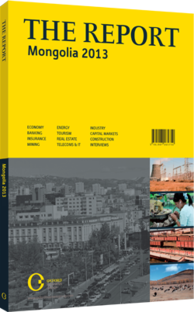OBG talks to M. Sonompil, Minister of Energy

Interview: M. Sonompil
What steps are likely to be implemented to liberalise the electricity sector in 2013?
M. SONOMPIL: Discussion about electricity sector liberalisation has been ongoing for 20 years and the topic has become even more important over the last decade. Today the Mongolian energy sector operates at a significant loss because the government is subsidising a large part of consumers’ and companies’ electricity bills. In order to avoid these losses, we are aiming to change the structure of the sector in 2013; for that reason, Resolution No. 72 has been enacted by parliament. As a result of this legislation, there will be an impact on current prices. Considering the fact that general Mongolian household income is generally low, it is almost impossible to increase the price for that segment of society. For that reason, the power tariff for private sector enterprises will be raised instead, as these businesses do not need subsidised electricity. Additionally, Mongolia remains too dependent on oil and diesel imports from Russia; 6% of electricity of national consumption (20% during peak times) is imported. We still import from Russia at MNT104 ($0.08) per unit but we deliver to companies at only MNT80 ($0.06) per unit. This must change.
How much potential exists for renewable energy projects as a percentage of the total energy mix?
SONOMPIL: In line with the global trend of shifting towards the use of renewable energy, the government classifies renewable energy supply as a priority sector for the future development of the Mongolian economy. Renewable sources include sun, wind and water, and due to the abundance of available land, it is a logical step for taking advantage of our geography. Currently, renewable energy constitutes 4.2% of our entire energy supply. We would like to increase this to 20% by 2020. Newcom is now finishing the first wind farm project in the wind valley, which will contribute 50 MW. It will mark the start of future additional wind projects. To support the renewable energy sector industry, the ministry has formulated a draft law on providing preferential conditions for private enterprises that want to import technology from abroad and invest in the sector. Different incentives including Customs tax exemption and preferential value-added, trade and commerce taxes will come into place, hopefully resulting in the desired investments. Especially in the Gobi region, Mongolia has great potential for further development of the renewable energy sector, given the proximity of mines that need additional electricity. Once domestic demand is covered, the opportunity to become an energy exporter to the Asian power grid will be created.
Additionally, there are private sector enterprises proposing new projects; we have issued several licences to a variety of solar and wind projects that will be able to supply 504 MW once completed.
What is the current status of the development of the coal-fired combined heat and power plant CHP5? How will it improve supply structure?
SONOMPIL: The construction of CHP5 has been under discussion for four years, but now we are certain that development will start soon. The potential consortium has been selected, feasibility studies have been completed and the construction plan is being mapped out.
To solve the issue of location, we are proposing to build CHP5 outside the city, on the east side.
Under the current energy structure, demand far outstrips supply; even with CHP5, electricity supply will not be enough in the capital city. Completion will take another four years, and demand will continue to increase in the meantime. There will surely be the need for a CHP6 power plant. Mongolia is growing by around 17% per year and electricity demand is increasing by 8% to 10% annually. Especially in the city, the demand has risen as households try to reduce their coal consumption and switch to electric heating systems. Currently, Mongolia produces 810 MW, but we aim to produce 2000 MW by 2020. It is a long process, as construction of those large-scale investments takes several years.
You have reached the limit of premium articles you can view for free.
Choose from the options below to purchase print or digital editions of our Reports. You can also purchase a website subscription giving you unlimited access to all of our Reports online for 12 months.
If you have already purchased this Report or have a website subscription, please login to continue.

